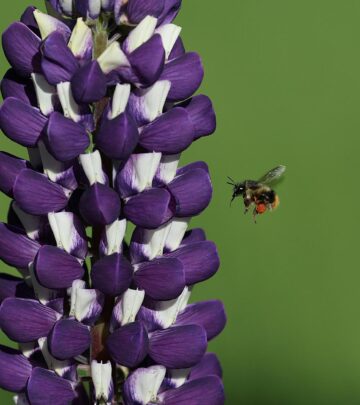How Much Sun Do Strawberries Need?
Ample daylight fuels lush growth and a harvest full of flavorful berries.

Strawberries are one of the most delightful fruits to grow in a garden, but they have specific requirements to thrive. Among these requirements, sunlight is crucial for healthy growth and fruit production. Strawberries generally need full sun to grow well, which means at least 6 to 8 hours of direct sunlight per day. In this article, we will explore the importance of sunlight for strawberries and how to ensure your plants receive the optimal amount of sun for maximum fruit yield.
## The Importance of Sunlight for Strawberries
Sunlight is essential for strawberries because it fuels photosynthesis, the process by which plants convert light energy into chemical energy. This energy is vital for the growth of leaves, flowers, and fruits. Without sufficient sunlight, strawberry plants may:
–
Lack Green Color:
The leaves may turn pale or yellowish, indicating a lack of chlorophyll production, which is necessary for photosynthesis.–
Produce Few Flowers and Fruits:
Insufficient sunlight often results in fewer flowers and fruits, or even none at all.–
Grow Slowly:
The plant’s overall growth will be slow, leading to weak and spindly stems.Ideal Sun Conditions for Strawberries
For optimal growth and fruit production, strawberries should be planted in a location that receives full sun. This means avoiding areas shaded by trees, shrubs, or structures. If you only have partially shaded areas available, strawberries can still grow but may not produce as much fruit. Wild strawberries, like *Fragaria virginiana*, are more adaptable to partial shade, but they are not as productive as domesticated varieties.
## Planting Strawberries in the Right Location
To ensure your strawberries receive the necessary sunlight, consider the following tips:
–
Choose a South-Facing Location:
In the northern hemisphere, a south-facing location typically receives the most sunlight throughout the day.–
Avoid Shaded Areas:
Keep your strawberry plants away from trees and structures that might block sunlight.–
Observe Sun Patterns:
Watch how sunlight moves across your garden throughout the day to pick the best spot.## Handling Insufficient Sunlight
If your strawberry plants are not getting enough sunlight, there are a few things you can do:
–
Transplant to a Sunnier Location:
Move your strawberry crowns to a bed or container that receives more sunlight. Use row fabric or shade cloth to protect the plants from sudden sun exposure.–
Use Reflective Materials:
Place reflective surfaces like aluminum foil or white rocks around the plants to reflect sunlight onto them.–
Prune Obstacles:
Trim nearby trees or shrubs to allow more sunlight to reach your strawberry plants.How to Identify Insufficient Sunlight
If your strawberry plants exhibit any of the following symptoms, they may not be receiving enough sunlight:
–
Pale Leaves:
Leaves lack their normal green color.–
Slow Growth:
The plant grows slowly and fails to produce runners or flowers.–
Lack of Fruits:
Despite proper care, the plant fails to produce fruits.## The Benefits of Full Sun for Strawberries
Growing strawberries in full sun offers several benefits:
–
Increased Fruit Production:
Full sun promotes the production of more flowers and fruits.–
Vigorous Plant Growth:
Plants grow stronger and more robust, leading to better overall health.–
Improved Flavor:
Strawberries grown in full sun often have a sweeter and more intense flavor.## Tips for Planting Strawberries in Full Sun
To ensure your strawberries thrive in full sun, follow these guidelines:
–
Soil Preparation:
Use well-draining, rich soil with plenty of compost to support healthy growth.–
Avoid Overheating:
In very hot climates, provide partial shade during the hottest part of the day to prevent scorching.–
Water Adequately:
Ensure consistent moisture, but avoid overwatering, which can lead to root rot.## Everbearing vs. June-bearing Strawberries
When choosing strawberry varieties, consider whether you prefer everbearing or June-bearing types:
–
Everbearing Strawberries:
These produce fruits continuously throughout the growing season, provided they receive adequate sunlight.–
June-bearing Strawberries:
These produce a single large crop in the early summer and require full sun for optimal yield.## FAQs
Frequently Asked Questions (FAQs)
Q: How much sunlight do strawberries need to produce fruit?
A: Strawberries need at least 6 to 8 hours of direct sunlight per day to produce fruit optimally.
Q: Can strawberries grow in partial shade?
A: Yes, strawberries can grow in partial shade, but they may produce fewer fruits. Wild strawberries are more tolerant of shade than domesticated varieties.
Q: How can I ensure my strawberries get enough sunlight?
A: Plant strawberries in a south-facing location, avoid shaded areas, and observe sun patterns to pick the best spot in your garden.
Q: What are the symptoms of insufficient sunlight in strawberries?
A: Symptoms include pale leaves, slow growth, lack of flowers, and reduced fruit production. If you notice these signs, consider moving your plants to a sunnier location.
Q: How often should I water strawberries in full sun?
A: Ensure consistent moisture, but avoid overwatering. Water strawberries when the top inch of soil feels dry to the touch.
References
Read full bio of Srija Burman















Community Experiences
Join the conversation and become a part of our empowering community! Share your stories, experiences, and insights to connect with other beauty, lifestyle, and health enthusiasts.